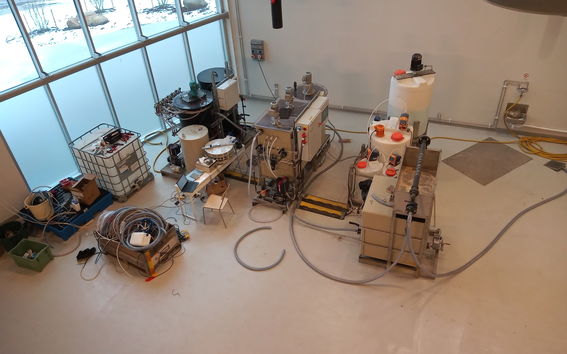What is NPHarvest?

Technical process
Several different methods for nitrogen and phosphorous removal are currently utilized but none of them are not implemented for harvesting the nutrients. We have developed a new method for recovering nitrogen and phosphorous from different liquid waste fractions, where already functioning processes and reactions have been combined in an innovative way so that a "process of a new age" has been born.
Recovery is based on using calcium hydroxide Ca(OH)2 to transform ammonium nitrogen NH4+ to gas ammonia NH3. Ammonia is separated by stripping through a GPHM (gas permeable hyrdophobic membrane). This enhances the energy efficiency of the process significantly. Separated NH3 reacts with an sulfuric acid to ammonium sulfate but we can also use phosphoric or nitric acid to produce different ammonia salts. Phosphorous is precipitated with calcium salts. The process does not require a warm environment so it is suitable for Finnish environment.






